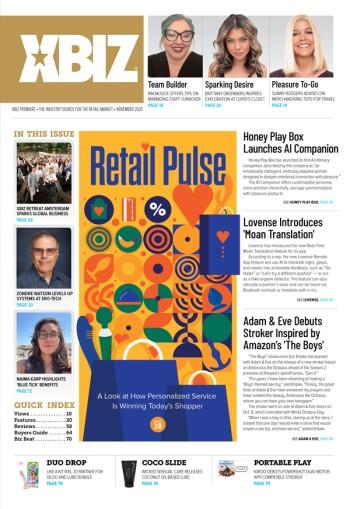April 8th marks the end-of-life for Windows XP, but what will happen to the millions of boxes still online — including my own, faithful and trustworthy 10 year old Dell XPS?
This isn’t an insignificant question, with an estimated 30 percent of desktop PCs still using this venerable operating system (OS), with third-world users the largest install base.
Without any further support from its creator, Microsoft, Windows XP, the company’s most successful OS, will soon become an even more attractive target for criminal hackers — and will slowly see dwindling support from third-party hard- and software vendors.
While Microsoft’s end-of-support announcement caused much concern among users, the situation is not as dire as some predict — at least not immediately. XP boxes will run just fine on April 9th — and for many years beyond that date.
They will not suddenly cease operating, and no one is being forced to upgrade.
Writing for the Trustwave Blog, Dan Kaplan notes that all good things must come to an end, including the 13 year old Windows XP, noting that vast publicity surrounding this shift in computing means it shouldn’t come as a big surprise to tech-savvy organizations — and indeed, it hasn’t.
“Of course, a number of companies currently running XP surely will be taken aback when the deadline arrives. But a much greater majority that hasn’t transitioned to a newer platform across their environment likely has done so on purpose,” Kaplan explains. “After all, such a migration is costly and complex, and runs the risk of breaking things due to incompatibility issues. Because of those reasons, and because XP is so widespread, expect to see it in use for many years to come.”
Most analysts agree that XP will live on for a large number of users.
“In truth, nothing will immediately change,” Matt Smith wrote for Digital Trends. “End-of-support does not negatively impact existing XP installations in any way. No features will be disabled, no upgrades will be forced, and even technical support will still be relatively easy to come across.”
Smith says that users shouldn’t plan to stick with Windows XP forever though.
“Eventually, you’ll need to upgrade or replace hardware with newer equipment which doesn’t support XP, or you’ll fall victim to a security flaw Microsoft never patched,” Smith concludes, adding that “You don’t have to jump to Windows 8 immediately. With some planning and perseverance, you can likely squeeze another year or two out of your existing setup.”
But is this practical reality “practical,” however, especially for adult webmasters that visit “questionable neighborhoods” when online as part of their work and play?
“Entities that fail to update are doing so at their own risk, both from a security and risk perspective, as well as a compliance standpoint,” Kaplan adds, citing the specific issue of Payment Card Industry Data Security Standard (PCI DSS), which will preclude users from relying on systems running XP. This is an important consideration for some paysite owners that may find themselves suddenly without a way to handle transactions…
All of this only reinforces the obvious need to upgrade — but what are the options?
The easiest option is to do nothing until sparks start flying out the back of my PC (this happened to my friend’s old ‘486 machine as it expired, making loud “backfires”), and relying on the skills of the Norton folks for my safety — but this isn’t the best option, as there are many other good reasons to upgrade at this point besides “having to.”
Clearly, Microsoft wants XP users to move to Windows 8.1, but this is a move that many will eschew due to the bad press surrounding Windows 8 — despite the fact that the 8.1 release addressed most of the early complaints about the new operating system.
Indeed, many on the upgrade path may opt for a Windows 7 installation, but that is only a temporary workaround at best, since you can soon expect a new Windows flavor that will leave 7 at least three generations behind the times, and such stagnation kind of renders the point of upgrading moot. And some PC pundits are already proclaiming the imminent demise of Windows 8.x — so the future may hold at least one OS upgrade for any new or soon-to-be purchased PC.
There are alternatives for continuing the use of legacy hardware, such as moving over to Linux or another OS, but that still leaves me running a 3.20GHz Pentium 4 with 3GB of ram and 320GB RAID, which cannot be considered a “performance platform” in 2014.
From an offline media server to a driver for a digital microscope (handy for my rock analysis and gardening), to use in video production with the aid of Black Magic tools or to drive a teleprompter, to even automate my model railroad — the variety of offline uses that these old machines will be put to is staggering.
This leaves me looking for a new “work” box and the choice isn’t an easy one, since changing operating systems leaves a learning curve and also means changing software — whether it involves a move from XP to 8.1, or to Mac or *nix platforms.
With the vast difference between XP and its newer brethren, learning one is the same as learning another, so going from XP to 8.1 “because you know Windows” won’t help as recourse for having to learn Linux or OSX.
Software is expensive and compatibility issues are very real, so for many XP users, the process of upgrading is not limited to hardware, but includes software and training — and while I am on the subject of “extras,” although my two digital 24” rotating flat panels (I love the portrait mode for articles and editing vertical photos) are still up to standards, you really need a fancy new touch screen to make the most of the new Windows OS — and this is a pricey option that eats up a lot of desk space (the 27” Dell is around $800).
My desk is 10 feet (3 meters) wide, so space isn’t a major issue; but every “option” raises the bar for acquiring and deploying a new system.
So what’s a boy to do?
The first thing I did was to install the latest version of Norton Internet Security and ran a full Windows Update (and drivers too) to make sure that everything is kosher on my XP box, with Norton promising continued antivirus support.
After much deliberation on this thorny topic, I have decided to go with Windows 8.1.
I started using Windows 3.1 when I moved over from IBM’s OS/2 (which I loved, but the writing was on the wall), and 8.1 marks perhaps the last milestone for me with the OS — I was damn close to going Mac, as I love my iPad 3 and iPhone 5S — but my two Dell workstations and one Dell laptop have been reliable performers, so the company will find another repeat sale to a loyal customer.
Perhaps staying in the Windows fold is psychologically comforting to me, as it lends a small degree of consistency to a rapidly evolving workflow and business environment — I’m not afraid of or resistant to change, I just like it in small doses that I can “control.”
For the technically curious, the box I ordered (my third Dell XPS) has a 4th Gen Intel Core i7-4770 Processor (8M Cache, 3.4 GHz); 32GB of Dual Channel DDR3 memory at 1600MHz; a 3TB 7200 RPM SATA Hard Drive (6.0 Gb/s); plus a 256GB SSD that’ll be great for video captures; and graphics from an AMD Radeon HD R9 270, 2GB GDDR5.
I should have it up and running before the XBIZ Summit in Miami and will keep you all posted on how this little adventure turns out — and if you are also looking to upgrade an XP system, I hope my story helps you to make the best choice…








